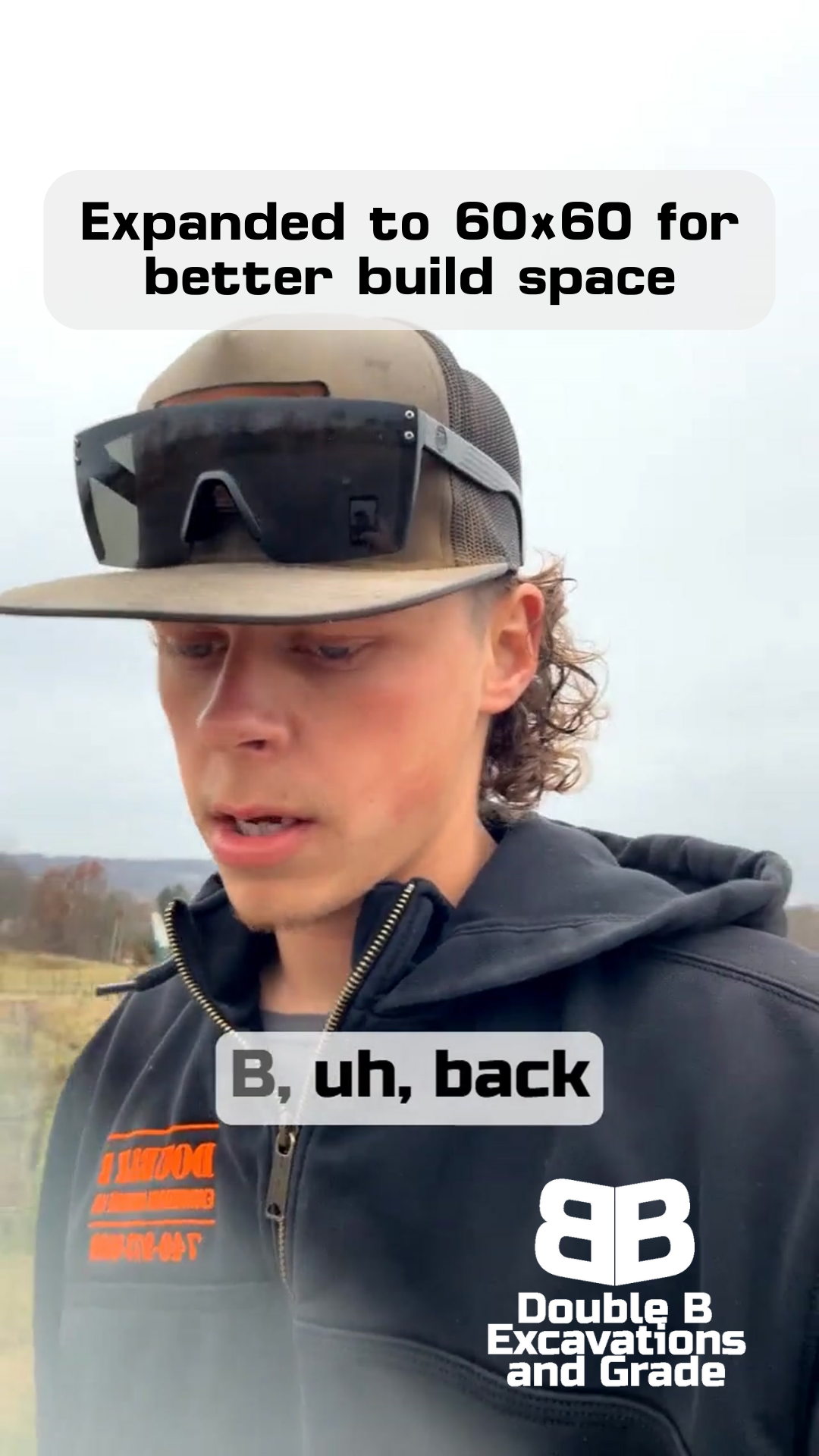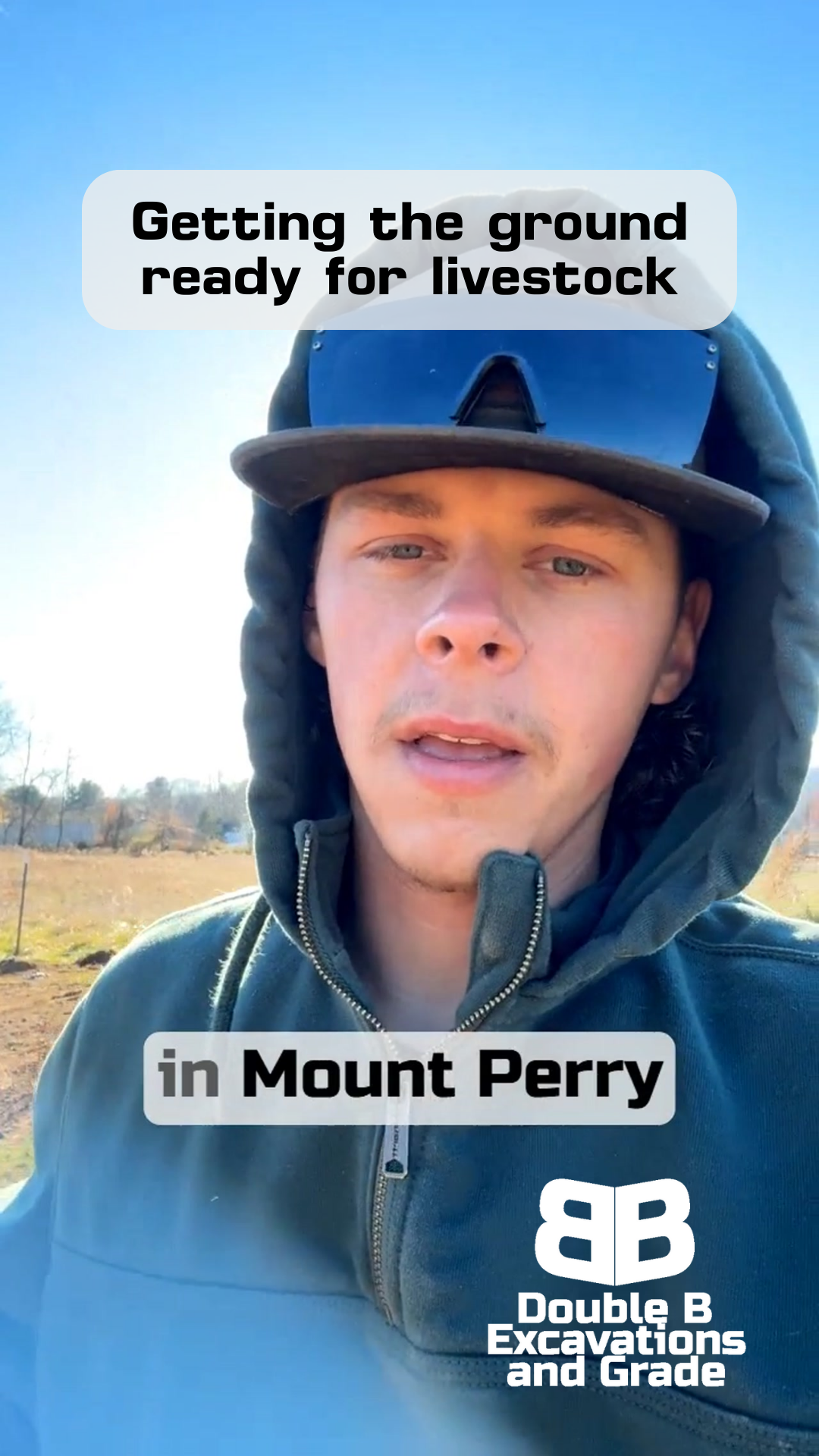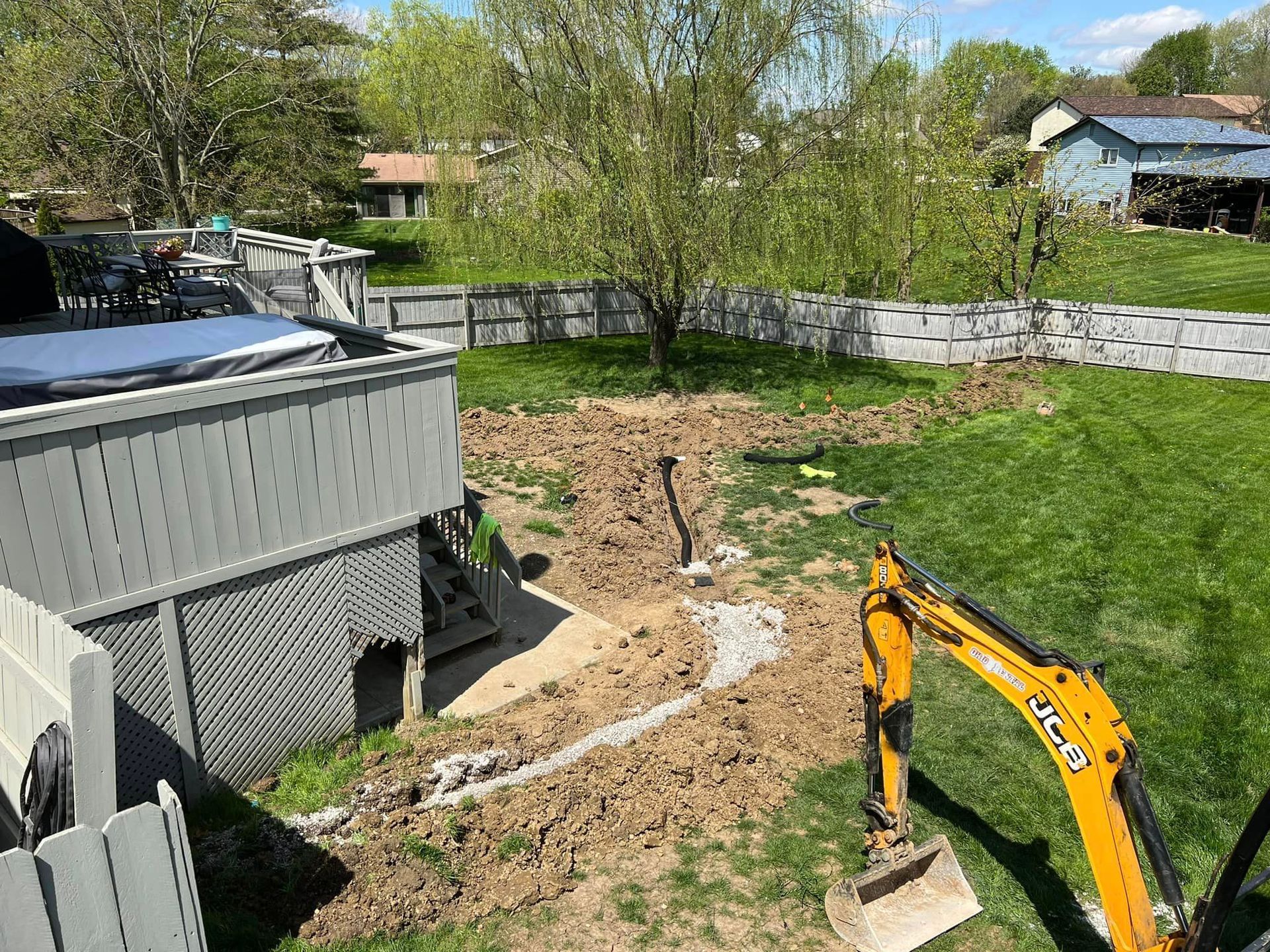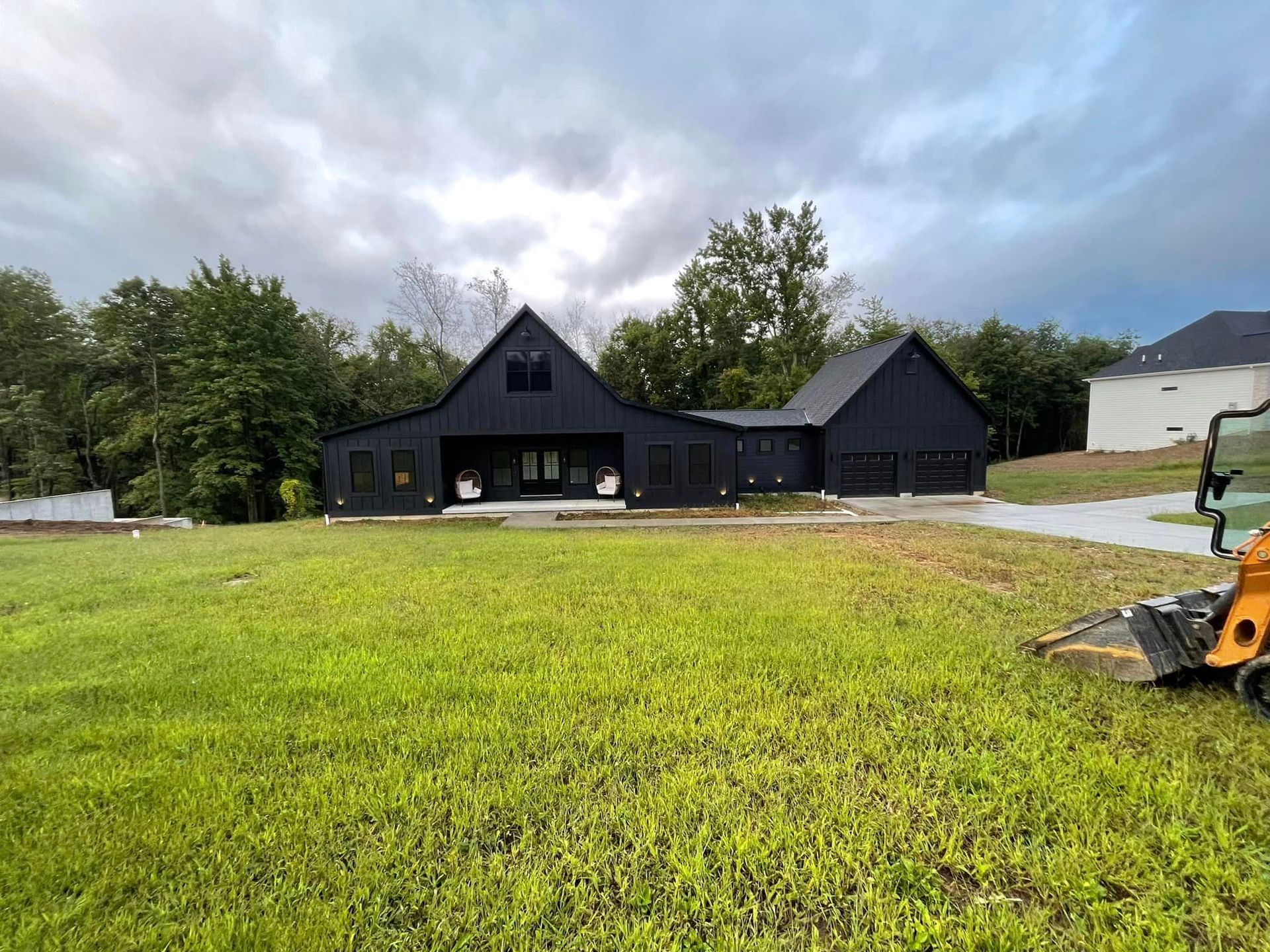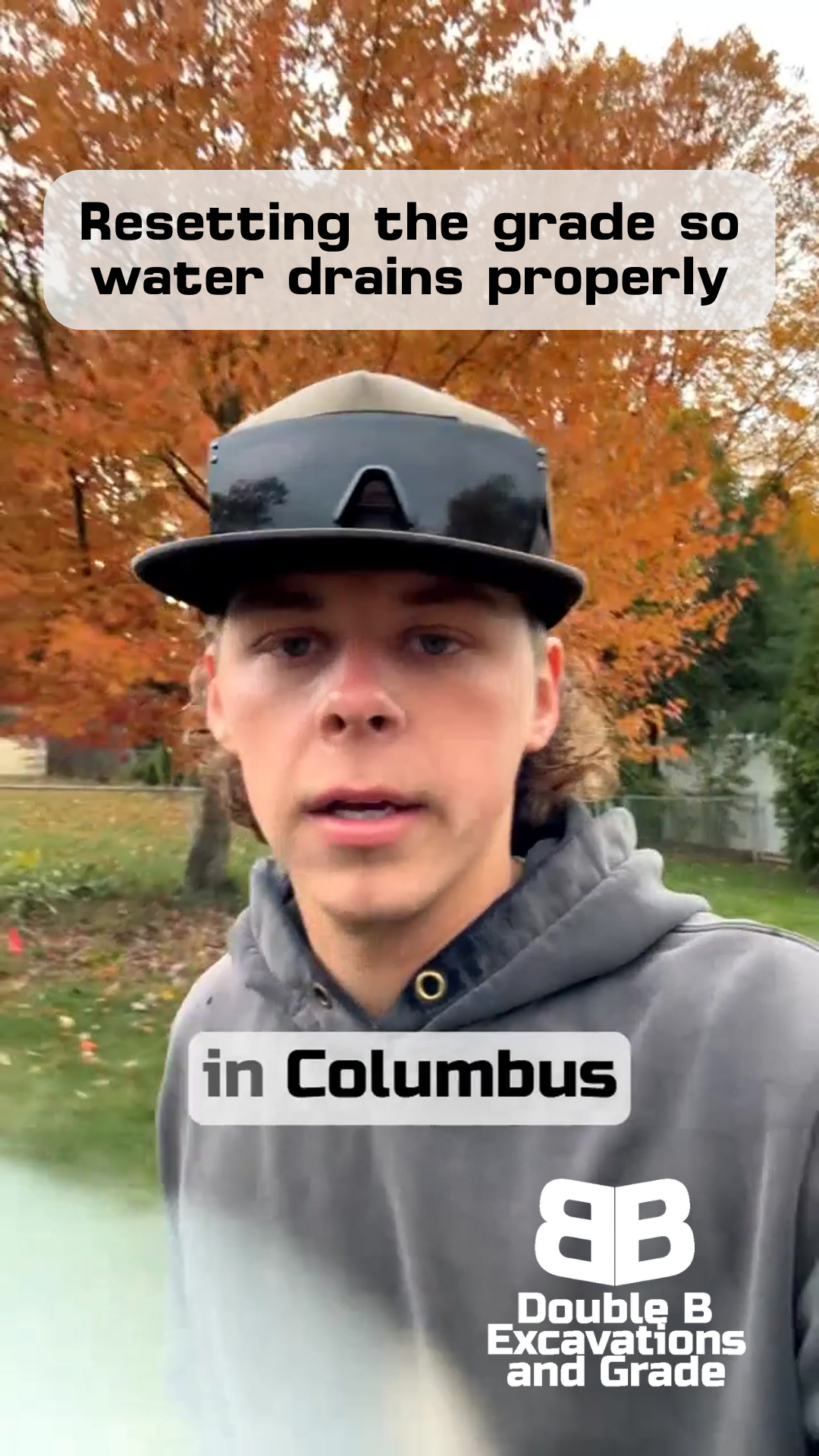Clay vs. Base Material: What We Found Under This Lancaster Driveway
Double B Excavations & Grade LLC
The Importance of Base Material
The Rhyme and reason behind properly building out gravel driveways
Sometimes what you can't see tells the real story.
That's exactly what we found during a recent driveway inspection in Lancaster. From the top, everything looked pretty normal.
But once we started checking things out?
Well, that's when we spotted something that could mean big problems down the road.
You know how they say "don't judge a book by its cover"? That definitely applies to driveways.
A nice-looking surface might catch your eye, but it's what's underneath that determines whether your driveway will last through those tough Ohio seasons or start giving you headaches after the first freeze-thaw cycle.
Welcome to Double B!
What We Discovered
Here's what we found in Lancaster: right under a thin topping layer sits nothing but clay. No proper base material, no structured support - just clay with a pretty cap on top. For folks who aren't around driveways all day like we are, this might not sound like a big deal. But trust me, it's like building a house without a foundation.
This isn't some rare problem either. We see it more often than you'd think, especially in older driveways or ones where someone tried to cut corners to save money. The surface might look fine today, but without the right base material supporting everything, that clay underneath is just waiting to cause problems.
Right now, the area's all graded out and actually ready for stone. But before we move forward, we're waiting on the client's decision. Because here's the thing - when we spot issues like this, we make sure our clients understand exactly what they're dealing with. It's not about selling more materials; it's about doing the job right so it lasts.
Understanding the Layers
Let me break down why base material matters so much.
Think of it like building layers of protection for your driveway.
When we put in proper base material, it does three important jobs:
- it supports the weight of vehicles,
- helps water drain away instead of pooling, and
- keeps your driveway stable through all kinds of weather.
Clay, on the other hand?
It's just not cut out for the job.
Here in Ohio, we deal with everything from summer heat to freezing winters, and clay reacts to all of it.
It swells up when it gets wet, shrinks when it dries out, and turns soft and mushy during spring thaws.
That's not what you want under your driveway.
The Real Impact
Here's where things get interesting - and by interesting, I mean potentially expensive.
Sure, skipping the base material might save some money today. But let's talk about what usually happens next:
- Cracks start showing up after a few freeze-thaw cycles
- Dips and low spots form where water collects
- The surface starts breaking down faster than it should
- Your nice, level driveway starts looking more like a wavy road
And fixing these problems?
That's where the real costs kick in.
Instead of just adding more stone on top (which is like putting a band-aid on a broken arm), you often end up having to dig everything out and start over.
That means paying twice for what could have been done right the first time.
Lancaster gets hit with all kinds of weather, and each season brings its own challenges.
A properly built driveway with the right base material can handle it all.
But when you're working with just clay underneath?
Every rain, every freeze, and every thaw is potentially causing damage you might not see until it's too late.
Making the Right Choice
When we talk with homeowners about situations like this, we always lay out the facts plain and simple.
Yes, putting in proper base material costs more upfront.
But think about it this way: you're not just buying stone, you're buying peace of mind.
You're investing in a driveway that won't turn into a headache every time the weather changes.
The right base material is like insurance for your driveway. It:
- Keeps things level and stable
- Helps water drain properly
- Stands up to heavy vehicles
- Fights back against Ohio's freeze-thaw cycles
Moving Forward on This Project
Right now, this Lancaster driveway is at a crossroads. We've got it graded out and ready for the next step, but that next step needs to be the right one. We're working with the homeowner to make sure they understand all their options and can make the best decision for their property.
If you're looking at your own driveway and wondering what's really under there, pay attention to signs like dips, waves, or areas where water collects. These could be telling you something about what's underneath. And if you're planning a new driveway or thinking about repairs, remember - what you can't see matters just as much as what you can.
Want to know more about what's really under your driveway? We're always happy to take a look. After all, catching problems early usually means fixing them is easier - and cheaper - in the long run.
